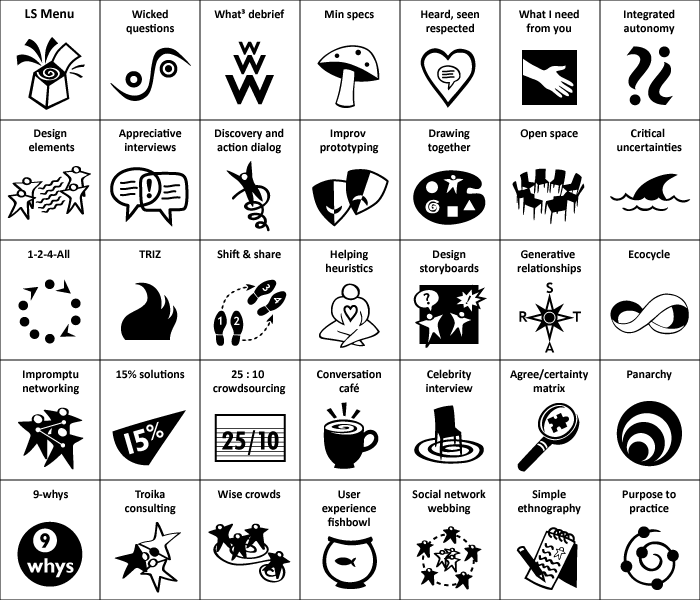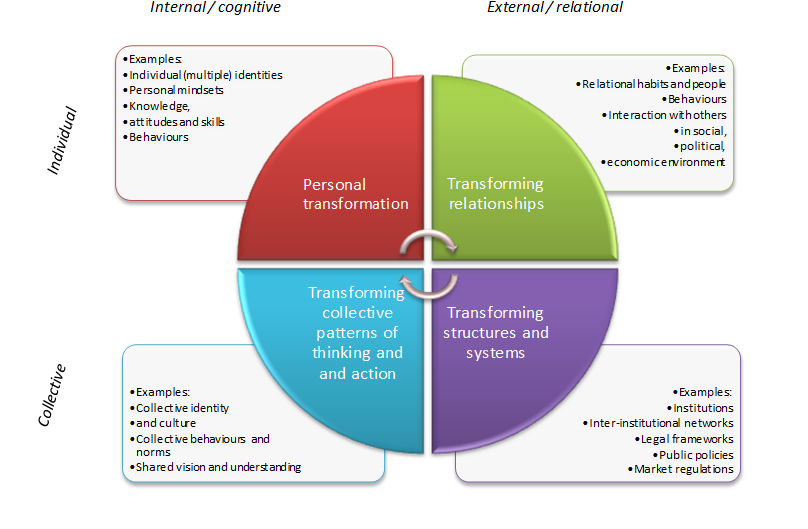In the previous blog I discussed how systems perspectives and complexity make us view capacity development differently. This time I want to look at four different dimensions of change identified by our team (Robbie Gregorowski and Mel Punton from Itad, with Itad Associates Cheryl Brown, Pete Cranston, and Isabel Vogel). Change at the level of the individual is just one dimension, but tends to be over-emphasised in traditional approaches to capacity development. We think that considering all four dimensions of change brings us closer to a Capacity Development 2 (CD2) approach.
Four different dimensions of change
Say we wanted to build the capacity of a country’s Department of Health to formulate better quality health policies. What kinds of change would we be hoping to encourage?
Do we need 4D glasses to consider capacity change?
Personal change:
We would need to think about building the knowledge and skills people need to do their jobs. Department staff might need technical knowledge around specific health issues, or skills such as communication, the ability to understand and use different types of evidence, or negotiation. This is firmly where traditional capacity building, (‘Capacity Building 1’) sits, and where formal and informal training approaches can make a difference. But a CD2 approach would go beyond knowledge and skills to consider mindsets, confidence and behaviours. Do staff value evidence? Do they have the confidence to speak up in meetings or challenge a peer or superior who they think is wrong? Are they willing to acknowledge mistakes and problems and to learn from them? A CD2 approach would also consider the power and status of people targeted by an intervention, as influenced by their managerial hierarchy, profession, gender, age, and so on. These factors will inevitably affect (either enabling or constraining) people’s behaviour change as a result of an intervention. A CD2 approach would be aware of this, and seek to understand how and why it happens.
Change in relationships:
Complexity science emphasises the interrelated nature of different parts in a system. To improve health policies it would not be enough to focus on the individuals involved in a policy making process. We would have to think about the relationships between individuals, within and outside the Department of Health. These relationships might be formal – following organisational hierarchies – but informal relationships might be just as important. How do these relationships influence the policy process? Who has influence and who doesn’t? Who is well connected to other individuals, and who isn’t? And most importantly: how can positive relationships be strengthened? How can we form new connections between people? As mentioned in our previous blog, this is where network mapping tools and techniques (such as NetMap) can come in handy.
Change in collective patterns of thinking and action:
Applying systems and complexity thinking to capacity development encourages us to think of the policy making environment within the Department of Health as having emergent properties, which are more than the sum of individual behaviours (see our previous blog for discussion on this).
A menu of methods for social learning. Source: Liberating Structures
So changing the features of an organisation or network is about more than changing the behaviours of specific people. We shouldn’t just ask ‘How do individuals behave’, we should ask ‘What are the social norms prevalent within the Department of Health that influence policy making? What does the collective identity and culture of the Department look like? And how can we influence these things to create an environment more conducive to quality policyabout more than changing the behaviours of specific people. We shouldn’t just ask ‘How do individuals behave’, we should ask ‘What are the social norms prevalent within the Department of Health that influence policy making? What does the collective identity and culture of the Department look like? And how can we influence these things to create an environment more conducive to quality policy making?’ What does this mean for action? Here are two ideas:
- We need to recognise the power of social learning: individuals learning together through sharing collective knowledge and experience. A focus on social learning can help an intervention move beyond building individual skills, to shifting organisational norms and patterns of action. Liberating Structures has some brilliant ideas about how to transcend the limitations of conventional hierarchies in order to shift collective thinking.
- Complexity thinking suggests that we need to expect the individuals we are working with to behave and interact in ways that give rise to potentially unpredictable system-wide changes and patterns. We need to be ready to harness and learn from this when it is positive, and change the way we work when it is not.
Change in systems and structures in the enabling environment:
Finally, we have to think about the enabling environment. How does the wider context support or constrain effective policy making within the Department of Health?
What makes an environment enabling or not? We pulled from the literature a few examples of features that an enabling environment might have (including this useful ECDPM brief and the K* project). When these features are present, an environment is more conducive to capacity building; and attempts to change individual behaviour, relationships, and collective patterns of thinking and action are more likely to be successful.
Adapted by Isabel Vogel from Inigo Retolaza 2011 http://www.hivos.net/Hivos-Knowledge-Programme/Publications/Publications/Theory-of-Change‘
- The legitimacy of a capacity development initiative, objective or strategy within an organisation. If a capacity development intervention has the buy-in and interest of the right people, it is more likely to lead to change. It is also important to consider the legitimacy of the individual or groups delivering or championing the intervention. Legitimacy can be acquired (e.g. through trainers or mentors demonstrating competence and building trust, buy-in, respect); or located within a particular hierarchy (e.g. through the head of the department publically praising and actively supporting the initiative).
- Space (and time, and permission) for individuals to operate, interact, and collaborate. If everyone already has nine hours of work to do every day, or there is a ‘heads down and whisper’ or ‘let’s discuss it in a formal meeting’ working culture, then attempts to improve collaboration and strengthen relationships may not get very far.
- Boundary spanners or brokers: people who are able to blur and redefine roles and relationships within an organisation. At first glance, this looks to be more about ‘personal change’ than an enabling environment – but the point here is that within workplaces there are often people with the ability and charisma to make things happen and change the way people think and work together. Cultivating a supportive enabling environment involves seeking these people out and helping them; not through giving them a set list of tasks to carry out, but through building their legitimacy and giving them space to talk, share, interact and spark ideas. Simply informing someone that they are going to be a ‘champion’ and putting them through training is probably not going to work.
I think the four levels of change are a really helpful way to take a capacity development intervention beyond skills development, and towards helping people, organisations and societies drive their own ongoing capacity development, mobilising their resources to develop new abilities in the face of new challenges. In the next post, Pete Cranston will zoom back in on personal change and consider a practical approach to measuring and building digital competencies in an organisation.
Melanie Punton: Consultant at Itad.
16th April 2014
Comments are moderated and any spam received will not be published.
The post Viewing Capacity Development through Four Dimensions of Change appeared first on Itad.





















